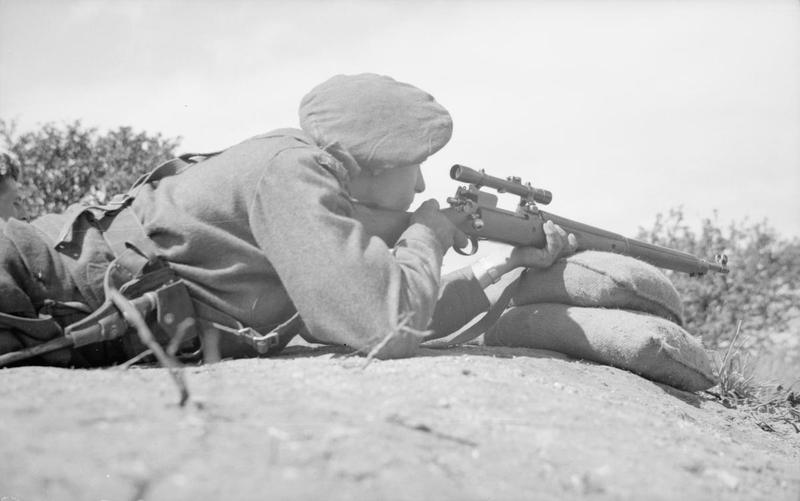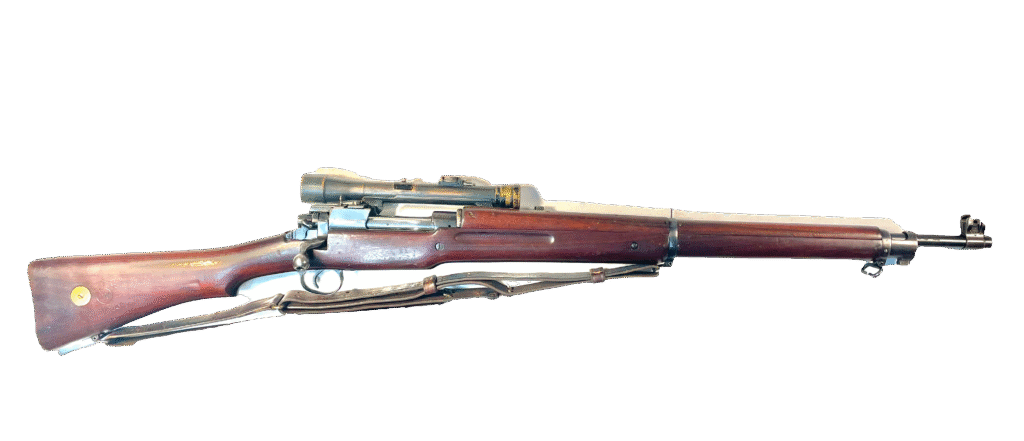
Versions of the Pattern 1914 sniper rifle:
-
Pattern 1914 Mk. I W (F)
-
Pattern 1914 Mk. I* W (F)
-
Pattern 1914 Mk. I* W (T)
Then after the 1926 new nomenclature
-
No. 3 Mk. I* (F)
-
No. 3 Mk. I* (T) .British 1918 conversions.
-
No. 3 Mk. I* (T) 1930s BSA conversions for the Irish Army. (NOT a Pattern 1914 sniper as these were only converted AFTER the 1926 name changes)
-
No. 3 Mk. I* (T) fitted with Model of 1913 Warner & Swazey Musket Sight (sniper scope), as used by the Canadian Army.
-
No. 3 Mk. I* (T) A new design made in 1940-1941 (NOT a Pattern 1914 sniper as these were only converted AFTER the 1926 name changes)
-
No. 3 Mk. I* Unfinished experiments by Lithgow converting No. 3 rifles to sniper as per 1918 version.
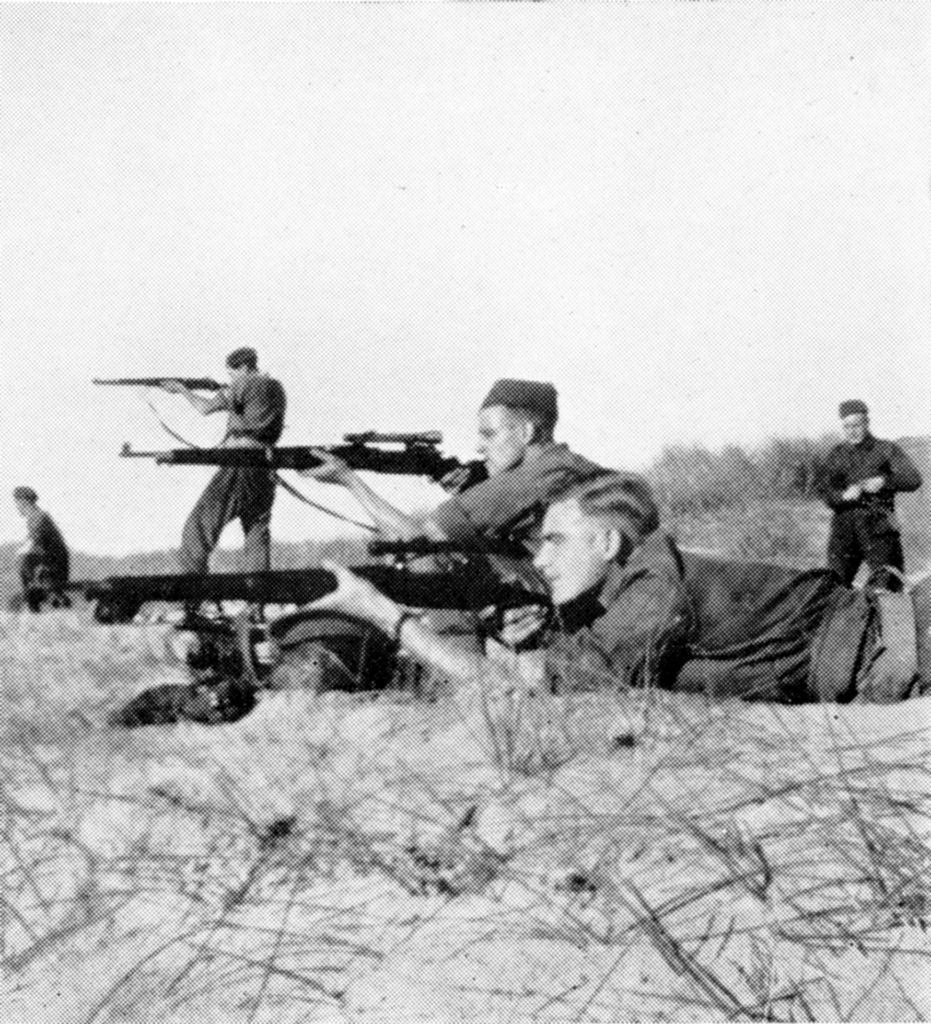
Sniper aiming No. 3 mk. I* (T) at a sniping school in Normandy 27 JUL 44 British 5 AF&PU © IWM (B 8179)
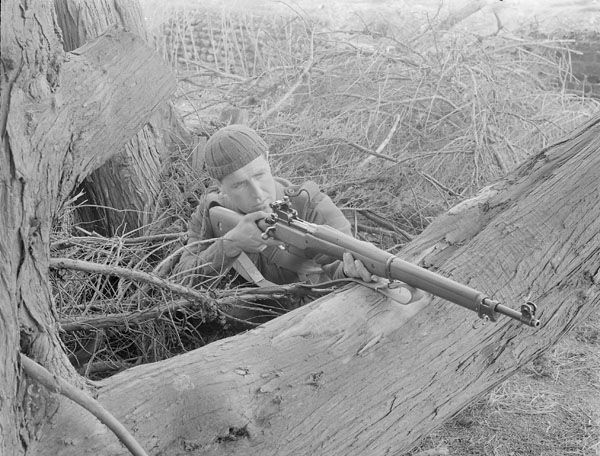
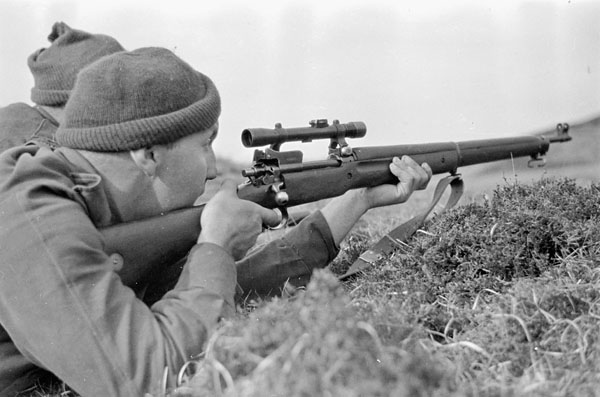
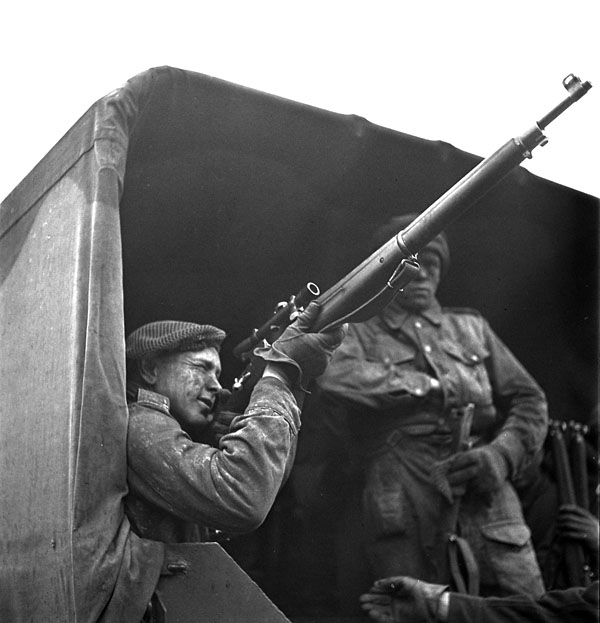
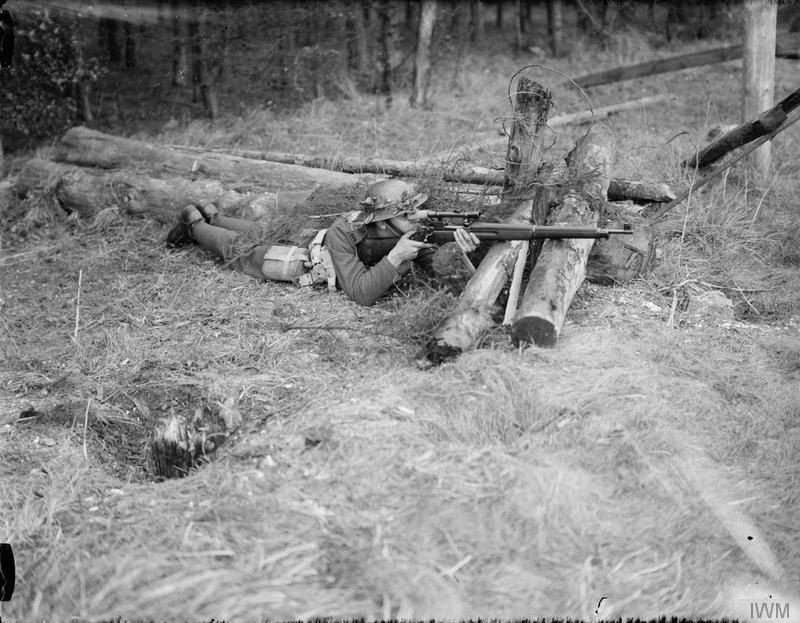
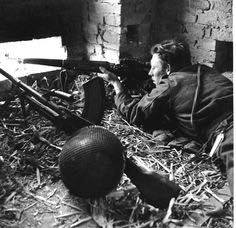
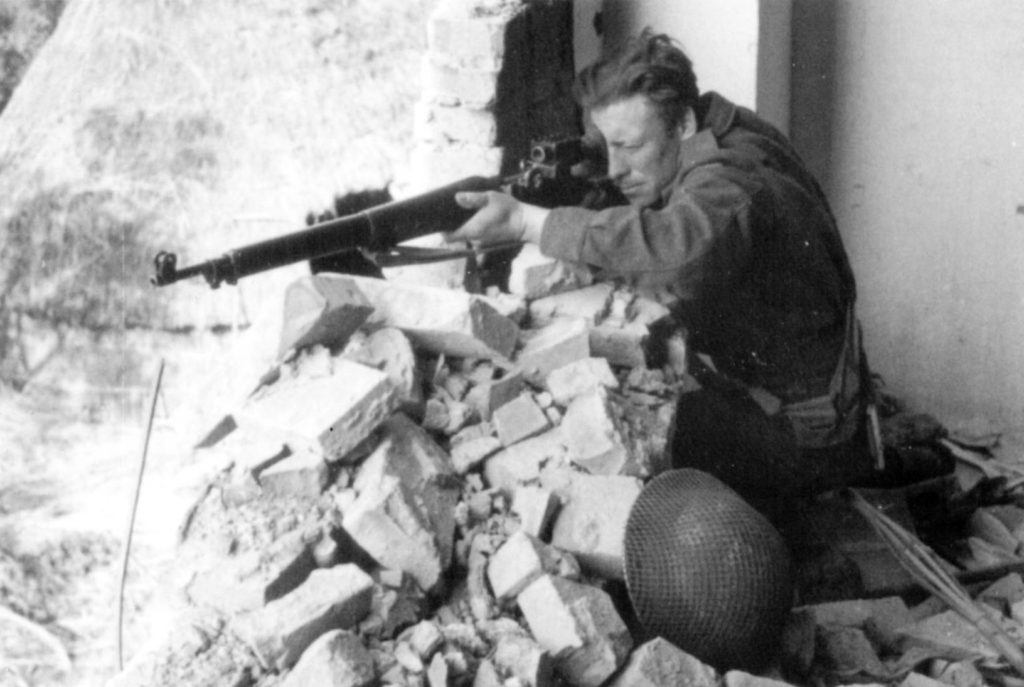
During the Great War, later renamed World War I, the Allies eventually realized that they were suffering significant casualties from German snipers. The Allies lagged far behind the Germans in sniping equipment for several years, but eventually, with organization and training, gained the upper hand.
Early Allied sniper rifles consisted simply of using the issue “iron sights”. The Ross Mk. III rifle was the best example of this as it was very accurate and had a fine sight. Early optical aids were of the Galilean type, which in effect were a telescope without a tube. The British created several versions. One lens was fitted to the muzzle and one either to the rear sight or over the bolt. They were of very low magnification and were fragile. Lattey Lense Sights were one example.
By 1915 the British started copying German scope designs. The ALDIS BROTHERS of Birmingham and the PERISCOPIC PRISM COMPANY of London were two of the major manufacturers. The American designed WINCHESTER scopes also were fitted to rifles. A very odd decision is that the British mounted most of their scopes offset to the left, leaving the ability to quickly reload the rifle using chargers (aka stripper clips). This offset caused many problems. The British fitted these scopes to .303″ SMLE Mk. III and Mk. III* rifles.
THE PATTERN 1913 and PATTERN 1914 RIFLES
NOTE: The terminology describing these rifles and their scopes varies considerably in official and unofficial publications.
Just before the war, the British had looked at adopting a new pattern of rifle using a flatter shooting cartridge in .276″.They produced the Pattern 1913 Trials rifles. These had copied some of the design features of the German Mauser rifle, but still had some problems. When war broke out in August 1914, the British gave up the idea of changing rifles and calibres at that time. The SMLE Mk. III rifles were in short supply to the decision was made to produce the new design as the Pattern 1914 in .303″ calibre, and after some problems in England, the work was contracted out to three American firms. Winchester, Remington and Remington-Eddystone. These rifles were sturdy and accurate but had major problems of lack of interchangeability of parts. Americans familiar with the WWII Reising Submachine Gun problems in Guadalcanal will understand how serious this problem could be in action.
USE OF THE PATTERN 1914 RIFLES
The Pattern 1914 rifles were generally used for units in training, or home defence, rather than in combat. The exception were the Winchester sniper rifles equipped with Fine sights and those equipped with telescopes.
Contrary to popular belief, Canada was not a major user of the Pattern 1914 rifles. Canada used the No. 1 rifle and Ross rifle Mk. III as a backup. In 1941 Canada started manufacturing the No. 4 Mk. I rifles. In WWII Canada chose not to buy surplus P14 rifles from the USA, and later when the need was great, ended up buying Model of 1917 rifles in .30/06 calibre. These were only used in Canada as far as I know. As they look almost identical to P14 rifles, it is understandable that many people assume they see P14 rifles in wartime photos in Canada. The Model of 1917 rifles had a red band painted around the fore-end and often had 30 / 06 painted in black on this to alert users of the different calibre.
Documentary film footage in 1942 taken on the Island of TIMOR shows Australian troops with the No. 3 Mk. I* (T) sniper rifle. The 1943 Pathe news film is entitled THE MEN OF TIMOR. They were left behind and believed to be dead, but they kept fighting and finally managed to make radio contact with Darwin, Australia. A brief firing sequence at 0:48 to 0:50 and a sniper in behind a radio operator at 2:11 to 2:14. Here is the link on YouTube:
THE MEN OF TIMOR https://www.youtube.com/watch?v=_wlpC3uUt5I
THE PATTERN 1914 Mk. I W (F) and PATTERN MK. I* W (F)
The British selected the Winchester examples for use as sniper rifles. A modification of the rear sight resulted in the “Fine” sight. Rifles so equipped were found to be more accurate than SMLE rifles fitted with scopes. This model was designated the Patter 1914 Mk. I W (F) or Pattern 1913 Mk. I W (F) depending upon whether the rifle had the Mk. I* change in locking lug length.
These “Fine” sight Pattern 1914 rifles were issued starting in late 1917 on a scale of about three per battalion.
THE PATTERN 1914 MK. I* (T)
In 1918 the decision was made to convert 2,001 of these Pattern 1914 Mk. I* W (F) rifles into telescopic equipped rifles. The new designation was Pattern 1914 Mk. I* (T). These were usually fitted with a Periscopic Prism Scope, “1918 MODEL”. One will see the rifle model and the scope model described in many different ways, e.g. the scopes are called “Model 1918” as well as “Pattern 1918”. Sometimes they are incorrectly referred to as “the PPCo scope”, but this is a problem as the PPCo also manufactured an earlier model of scope that was of different dimensions and design.
In 1944-1945, the Australians made a version of the Model 1918 scope, apparently as the “Sight Telescope (Aust.) Pattern 1918” and “Sight Telescope (Aust.) Pattern 1918/1” in 1944-1945. The Australian scopes appear to have been made as replacements for damaged or lost British made Pattern 1918 scopes and for the new Heavy Barrel No. 1 Mk. III* H.T. rifles. (H= Heavy Barrel, T = Telescope equipped).
The Pattern 1914 Mk. I* (T) rifles were just coming online in the system when the fighting ended on November 11, 1918. After the war the British decided to keep the new Pattern 1914 Mk. I* (T) as their standard sniping rifle and removed the scopes from almost all of the SMLE Mk. III and III* sniper rifles. These sniper rifles were the standard sniper rifle into WWII until eventually being replaced by the new No. 4 Mk. I (T) rifles (first issued in December 1941) and the Australian No. 1 Mk. III* H.T (starting in 1944). Canada had kept Ross sniper rifles between the wars and had not adopted the Pattern 1914 Mk. I* (T), and reportedly only acquired two examples for study purposes.
Research by “Damien” that he posted on GUNBOARDS.COM in thread “P 14 rifle” at (3) P 14 rifle | Page 2 | Gunboards Forums Please see his original posting for details, indicates that Small arms returns to the Colonial Office in 1935 showed 668 No. 3 Mk. I* (T) in Australia. These were then distributed as follows:
- Roughly 1/3 to 2MD (Military District), New South Wales (NSW)
- Roughly 1/3 to 3MD, Victoria
- Roughly 1/3 to the other MDs, Queensland, South Australia, Western Australia and Tasmania.
Damien wrote: “Only NSW stamped a prefix to the serial number on the RH rear sight protector. I took down some of the NSW issue numbers … They led me to believe that NSW got more than their usual 1/3 share. … As for their use by Australia in WW2, they were the mainstay 2nd AIF sniper in North Africa and Middle East and were used especially in Tobruk during the siege defence.”
QUANTITY OF PATTERN 1914 Mk. I* (T) MADE
2, 001 British conversions by Periscopic Prism Company Limited in England in 1918.
(Often quoted as 2,000, it is likely that one was sent to the Pattern Room and 2,000 to the British Army. Later some of these were sent to other armies e.g. in Australia.
79 converted by BSA for Ireland between the wars. Aa YouTube “Forgotten Weapons” video on the Irish Contract No. 3 Mk. I* (T) sniper rifle. 79 is the most common number reported, but there is a higher number sometimes quoted. I suspect that any “extra” rifles were existing standard sniper rifles transferred from British stores.
421 converted by Alex Martin in Glasgow for the British early in WWII
Does anyone have any photos showing is model in use? Even though more Martin conversions were made than the Irish Contract, virtually all of the Irish Contract rifles survive intact, as collectors bought them when they sold surplus to a U.S. dealer. The Alex Martin conversions are much more rare today even though more than five times as many of them were made.
======
2,501 TOTAL
Additional Australian Production of No. 3 Mk. I* (T) Rifles?
Ian Skennerton has come up with an interesting theory that Lithgow in Australia converted the No. 3 Mk. I* (T) rifles used by Australia around the beginning of WWII. Skennerton is highly respected for his research and publications, especially on Lee-Enfield and Enfield types of rifles. He bases this theory upon the fact that he found some incomplete Pattern 1914 sniper actions in Lithgow’s storage areas and indeed it looks like they tinkered with the idea, even working on some non-Winchester examples. I believe that Lithgow experimented with converting some standard Pattern 1914 rifles to sniper rifles, of various makes.
Research indicates that the comple Australian issue marked Patt’14 Mk. I* W (T) are from the original British bacth of 2001 converted in England in 1918. When issued to Australian forces they were later marked with Australian issue marks. The D/|\ (arrow inside the D) Australian issue mark used up until circa 1926 according to Skennerton, has been noted on a number of them on the left side, as well as the D/|\D mark that superceded that marking on the right side. Research by “Damien” indicates that Australia had 668 of these Pattern 1914/No. 3 sniper rifles and that only New South Wales (NSW), which apparently received over 1/3 of these, added a prefix serial number to the relocated serial number (lacking the “W”) on the right side of the rear sight housing. e.g. mine 248.191781. Other researchers feel that the number may have referred to both Patt’14 sniper rifles and spare Patt’14 rifles, which would indicate a much small number of sniper rifles.
IRISH CONTRACT So far, my research indicates that only the 79 rifles converted by BSA in 1935-1938 for Ireland had the “W” prefix included in the relocated rifle serial number on the right side of the rear sight housing Suffice to say that research is ongoing. Ian Skennerton published a video on YouTube about September 2023 called “Lithgow’s first production .303 Sniper Rifle”.
Here are the Pattern 1914 Mk. I* W (T) / No. 3 Mk. I* (T) Rifles with Australian issue markings that I am aware of at this time. Any additions or corrections are appreciated. Those with a prefix number are believed to have been so marked by the State of New South Wales in Australia after World War I.
| Sight base prefix | SN on sight base | Owner | |
|---|---|---|---|
| 89. | T5974 | UNKNOWN – in Australia ? | |
| ___?. | ________? | Australian War Memorial. Australian issue marked, but Serial number was not provided. | |
| 114. | 77745 | UNKNOWN, Australia? | |
| 122 | 149556 ? | UNKNOWN SOLD by Weller & Dufty late 1980s | |
| 138. | 199789 | UNKNOWN | |
| 206. | 208325 | UNKNOWN, Australia? | |
| 228. | 228719 | Son on Gunboards.com Australia | |
| 244. | ??? | B.P. Australia | |
| 247. | 191511 | T H. Australia | |
| 248. | 191781 | Colin MacGregor Stevens (Seaforth72) Canada | |
| 260. | 198841 | Skwan on Milsurps.com. Canada |
NAME CHANGES
In 1926 the British system for naming small arms was changed.
- Patt’14 Mk. I W (F) became the Rifle, No. 3 Mk. I (F)
- Patt’14 Mk. I* W (F) became the Rifle, No. 3 Mk. I* (F)
- Patt’14 Mk. I* (T) became the Rifle, No. 3 Mk. I* (T) (Note that this does NOT include the Irish Contract)
- Pattern 1914 became the Rifle No. 3
- SMLE Mk. III or III* became the Rifle, No. 1 Mk. III or III*
Two sniper versions built AFTER the nomenclature change never used the pre-1926 designation:
- No. 3 Mk. I* (T) (IRISH CONTRACT) converted in the 1930s. Mated with BSA made Model 1918 scopes and built for the Irish Republic. Although they are identical to the Patt’14 Mk. I* (T), they were assembled as sniper rifles later and bear some different makings.
- No. 3 Mk. I* (T) A, converted in 1940-1941 was not renamed as the model was created AFTER the nomenclature
Canada fitted some Warner & Swasey Model of 1913 sniper scopes, apparently removed from Ross rifles, to some No. 3 rifles after arriving in England and photos show these being used in Italy in 1943-1944.
MY AUSTRALIAN ISSUE Pattern Patt’14 Mk. I* (T) / No. 3 Mk. I* (T)
This rare and historic rifle is now (2023) undergoing restoration in Canada. – It is serial number W191781, which was changed in Australian service to 248.191781.
This rifle had been sporterized by removing the scope, rings and bases, but fortunately the barrel and action were not damaged other than plugging the two holes for the front scope mounts. The wood had been cut back and sanded. The rifle was found with the Fine sight still in place, but its aperture “O” battle sight had been modified to an open “U” battle sight, presumably by a civilian owner. This rifle has all of the important serial numbers matching (the body, barrel and bolt). This rifle was made in 1917, was almost certainly converted to Pattern 1914 Mk. I* W (F) with a FINE sight in 1917-1918, and then late in 1918 was further converted to the Pattern 1914 Mk. I* (T) by adding a Model 1918 (aka Pattern 1918) sniper scope made and installed by The Periscopic Prism Co. Ltd.
The altered FINE sight has now been replaced with an undamaged original Fine sight. Both are Winchester sights and both had the old serial numbers cancelled.
The furniture has been replaced with an original set of Patt’14 Mk.I* Winchester furniture off of another Patt’14 Mk.I* rifle as there were no differences, other than the removal of the long range “volley” sights. The Australians did stamp the right side of the butt, forward of the factory markings, with an early Australian issue D/|\ (with the arrow inside the D). They amy also have stamped the serial number of the rifle into the wood but this has not yet been confirmed.
A Pattern 1908 web sling dated 1916 has been installed. By happy coincidence it is an ANZAC one, marked N/|\Z.
Oddly, bayonets were apparently issued with this model of sniper rifle, and it is now mated with a Pattern 1913 Winchester made bayonet with an unusual history of combat use according to the soldier’s grandson, who is also a veteran.
The blank brass butt disc was still in place in the sporterized stock, and so it was transferred to the replacement stock which still had its own brass disc.
The rifle has on its left side, the 1926 and earlier Australian issue mark of “D” with an “/|\” inside.
On the right side of the rear sight housing, the rifle’s serial number was stamped, without the “W” prefix. From what I can see in a research database that I have created of Patt’14 (T) serial numbers, the “W” prefix for the relocated serial number was only added on the Irish Contract rifles that were assembled in the 1930s in England. Added in front of the relocated serial number on this example is a three digit number separated from the main serial number by a period. Above this number combination is the 1926 and later “D/|\D” Australian Government property mark and above that is a “2” indicating 2nd class stores, according to Enfield rifles expert Ian Skennerton.
2
D/|\D
248.191781
This translates as rifle W191781 and assigned New South Wales (Australia)’s number 248. Skwan’s Patt’14 Mk.I* (T) has prefix number 260. This suggests that NSW Australia had at least 260 Patt’14 Mk.I* (T) rifles on issue.
This renumbering would be similar to New Zealand’s adding their own serial numbers to No.4 rifles that they held. It is also similar to the common practice of armies to assign their own numbering system for vehicles, rather than using the manufacturers’ serial numbers (VIN) which can vary drastically in length and composition. Britain with its WD number in WWII, Canada with its DND numbers and later CAR and CFR vehicle numbers, Australia with its ARN etc.
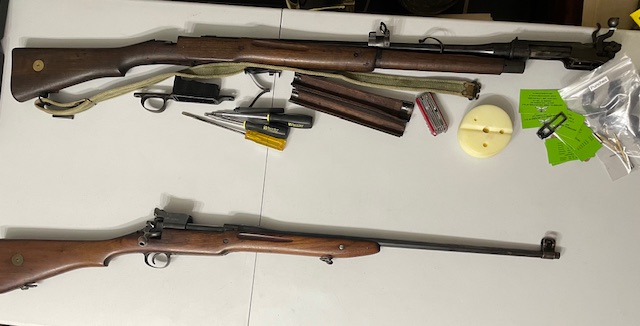
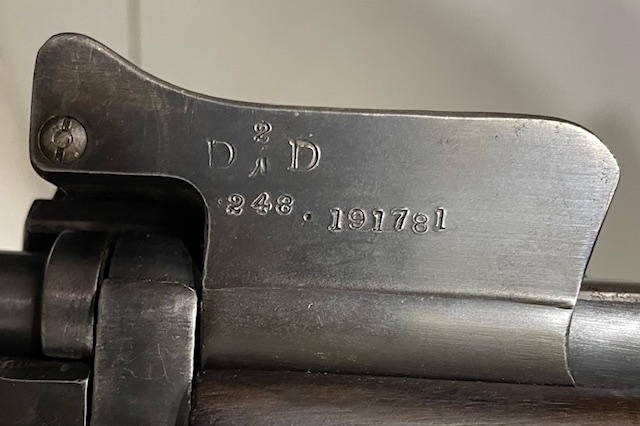
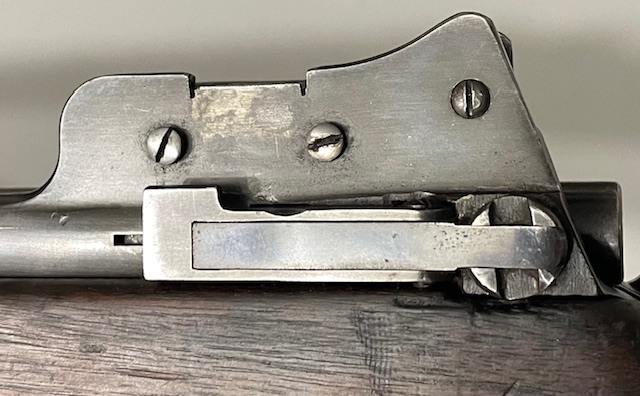
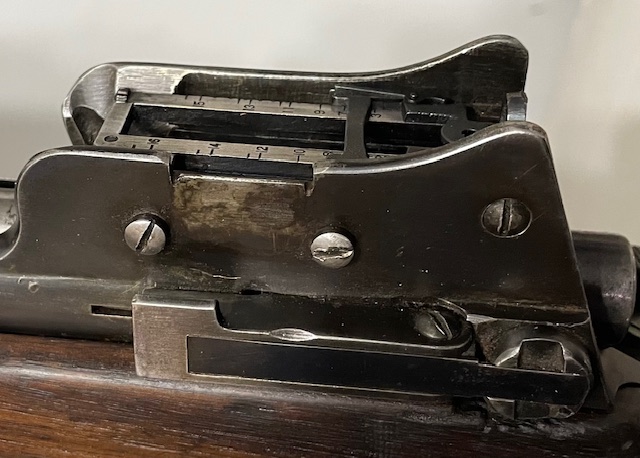
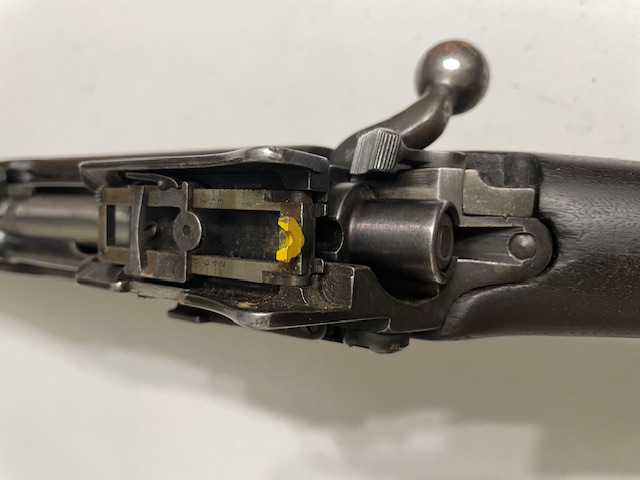
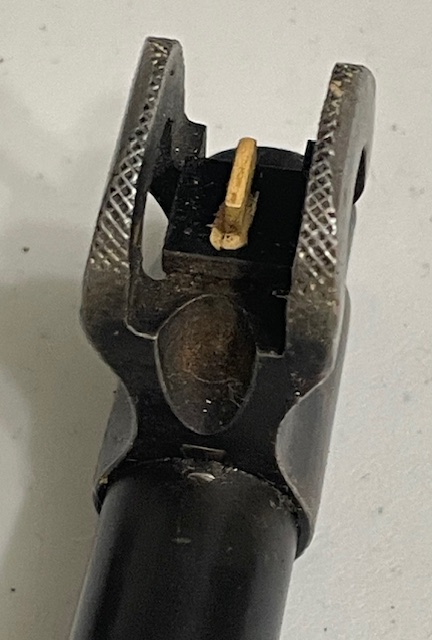
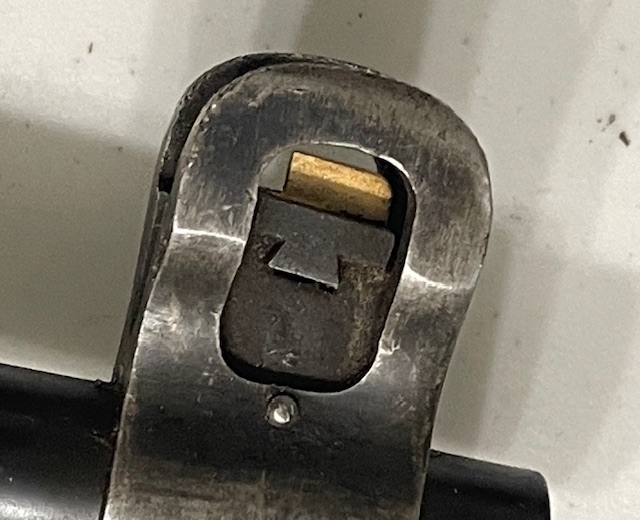
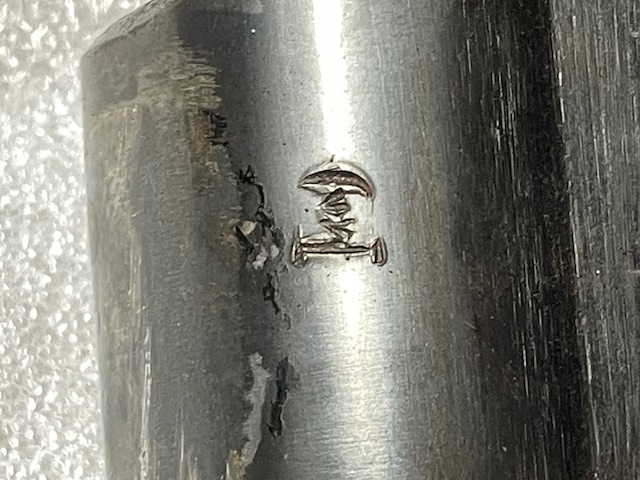
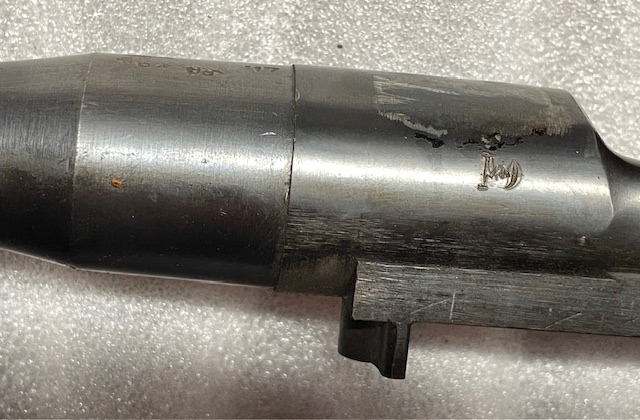
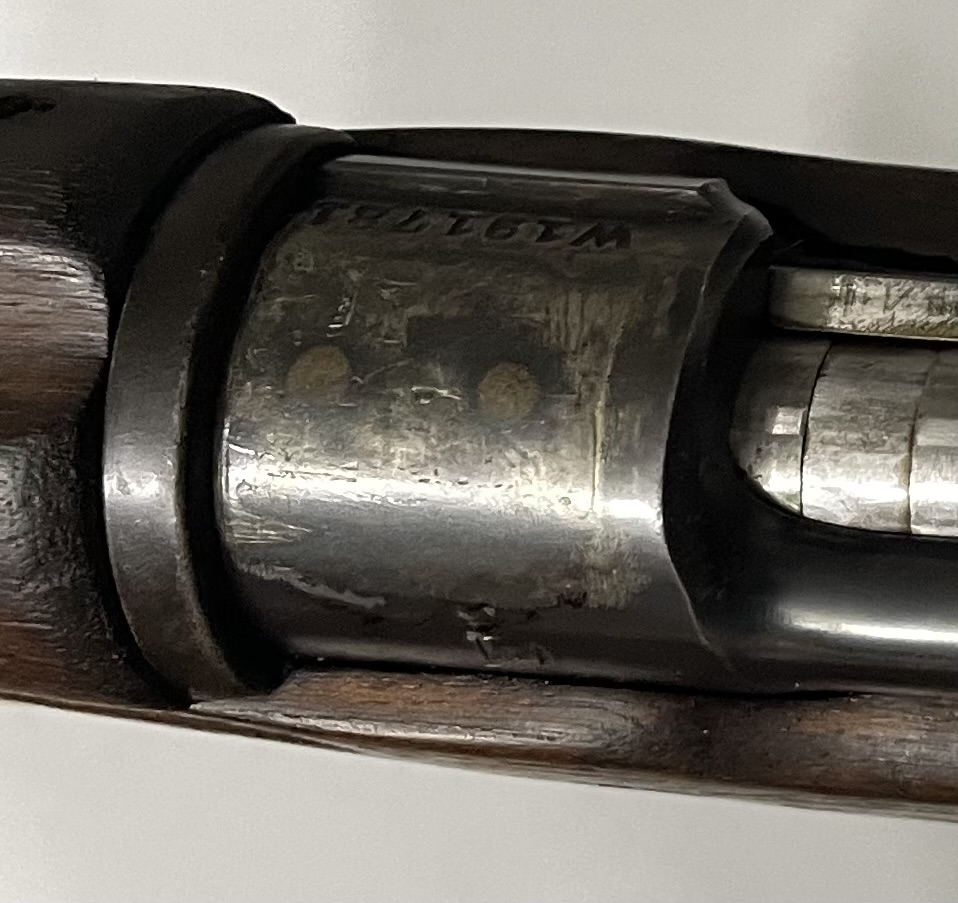
Filled holes where front scope mount had been fitted. This mount would have hidden the serial number and this is the reason why the number was then marked on the right side of the rear sight housing for the sniper rifles.
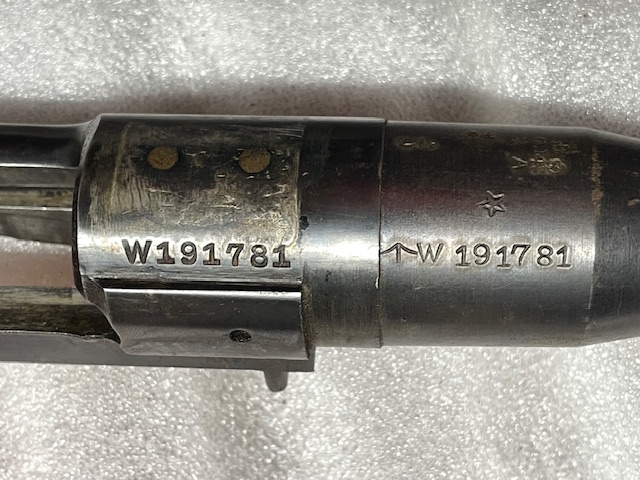
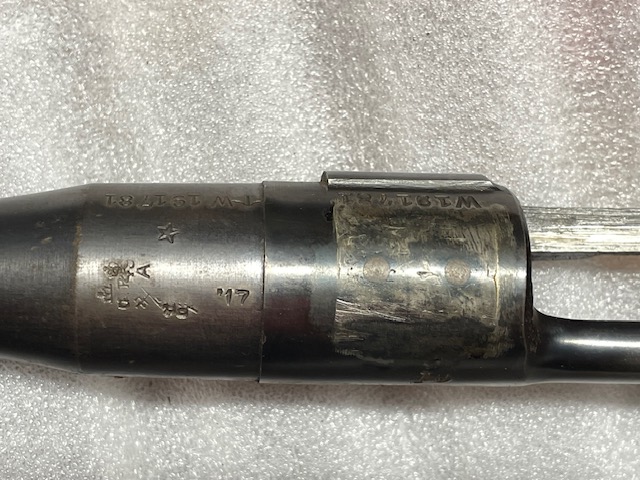
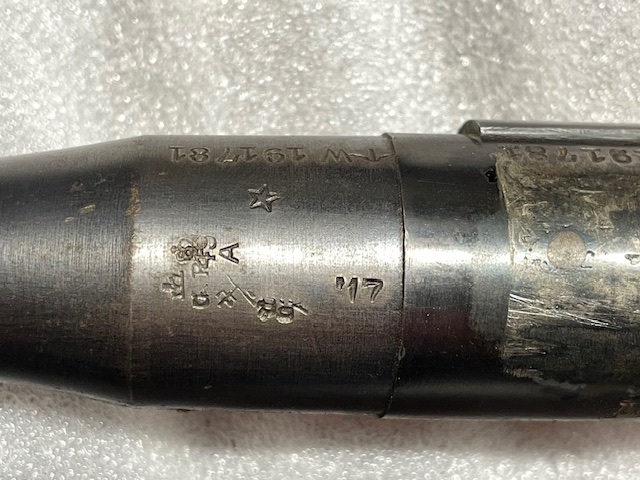
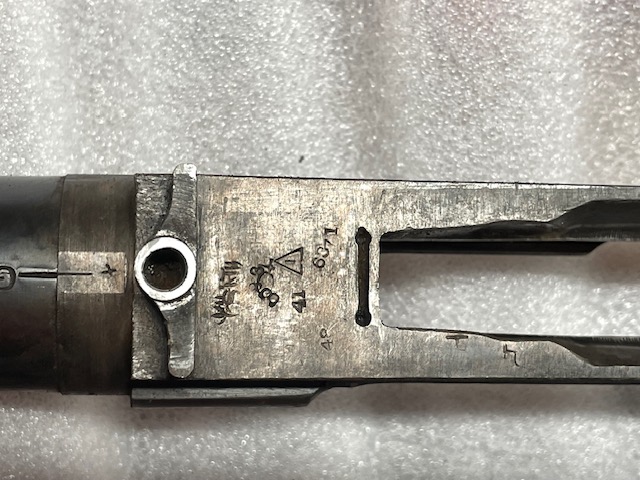
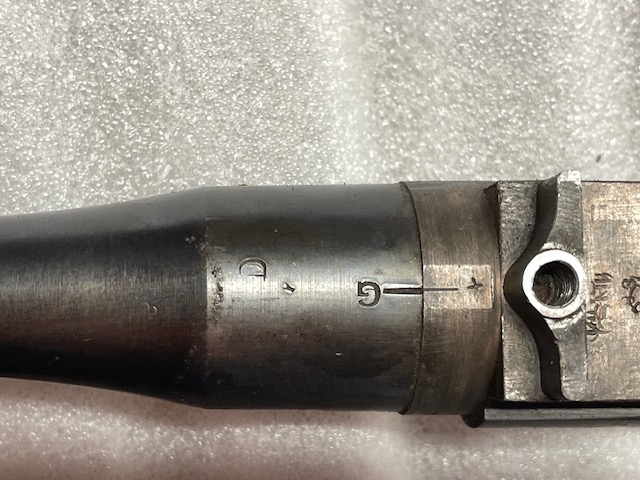
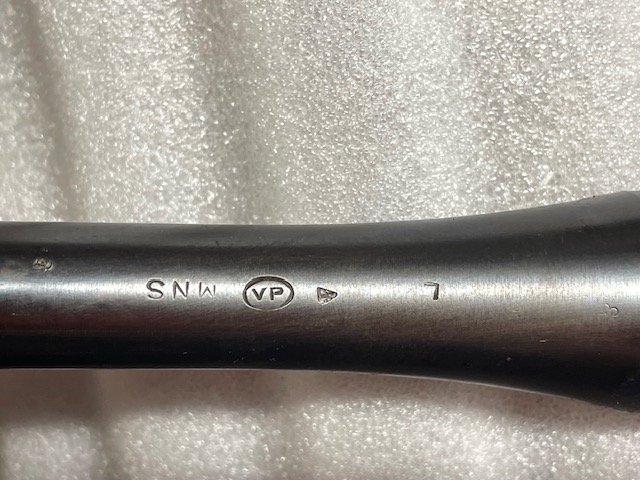
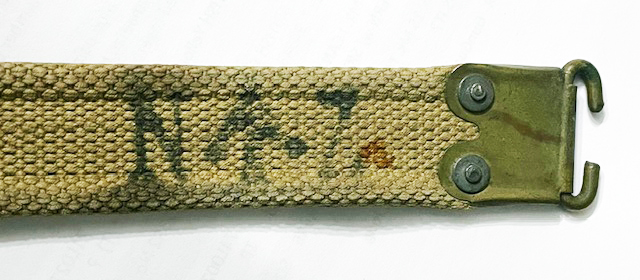
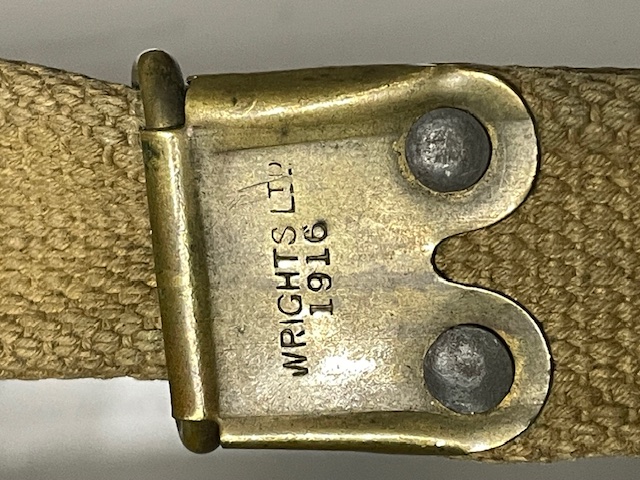


No. 3 Mk. I* (T) A
My video on this very rare sniper rifle. Published 2025-08-19
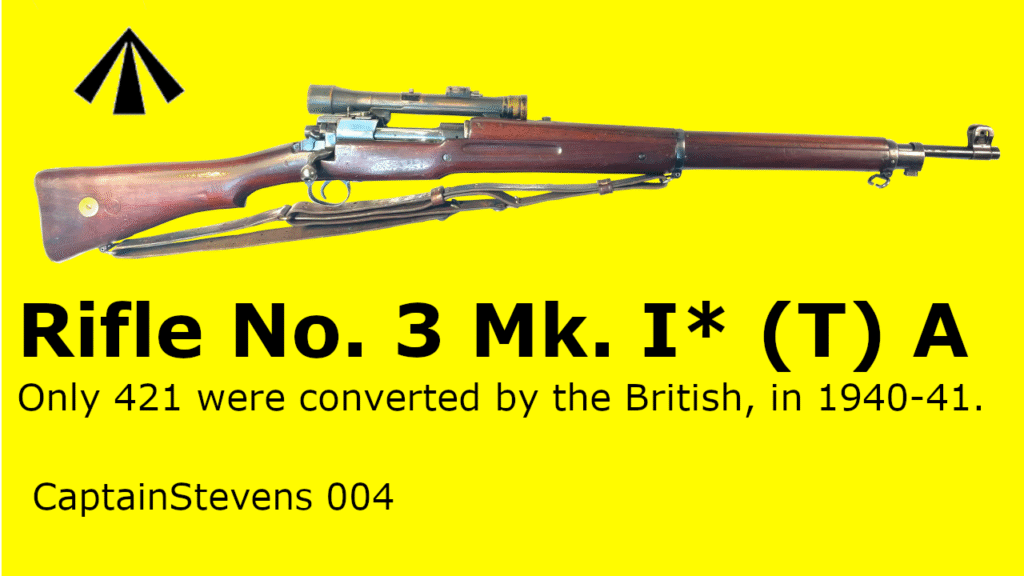
https://youtu.be/crulhmVrDyg
Research is ongoing!
REFERENCES (selected)
- Skennerton, Ian THE US ENFIELD, 1983
- Skennerton, Ian Small Arms Identification Series – .303 PATTERN 1914 RIFLE & SNIPING VARIANTS, S.A.I.S. No. 10, 1998/2012
- Skennerton, Ian THE BRITISH SNIPER British Commonwealth Sniping & Equipments 1915-1983, 1983
- Stratton, Charles R. PATTERN 1914 AND U.S. MODEL OF 1917, 2000 / 2007
- His Majesty’s Stationery Office, SMALL ARMS TRAINING VOLUME I., 1924
- YouTube video “Pattern MKI W (T) – The Best Sniper Rifle of World War One .”
- YouTube Video “Lithgow’s first production .303 Sniper Rifle” NOTE: I believe that these were unfinished conversions, Australia used original British 1918 period Pattern 1914 Mk. I* W (T) and probably the No. 3 Mk. I* W (F) sniper rifles.
-
LINKS TO OTHER PAGES OF MINE
-
Sniper Rifles & Snipers
-
Ross Sniper Rifles
-
Pattern 1914 (later renamed No. 3) Sniper Rifles (this page)
-
Lee-Enfield No. 4 Mk. I (T) Sniper Rifle
-
No. 4 (T) Research Database
-
No. 4 Mk. I (T) Sniper Equipment Markings
-
Long Branch Scout Sniper’s Rifle 1943-1944
-
R.E.L. C No. 67 Mk. I sniper scope
-
R.E.L. Scope Case C No. 8 Mk. 2
-
Sniper Scope Tools
-
Sniping Observation Telescopes
-
“Shoot To Live” book 1945 Canadian Army *
-
U.S. M1903A4 Sniper Rifle
-
FN C1A1 Sniper Rifle
-
C3 Sniper Rifle
-
C3A1 Sniper Rifle
-
MacMillan C15 (TAC-50)
-
World War II sniper rifles which shows where the No. 4 (T) rifles fitted in with its contemporaries.
-
-
-
RETURN TO HOME PAGE
